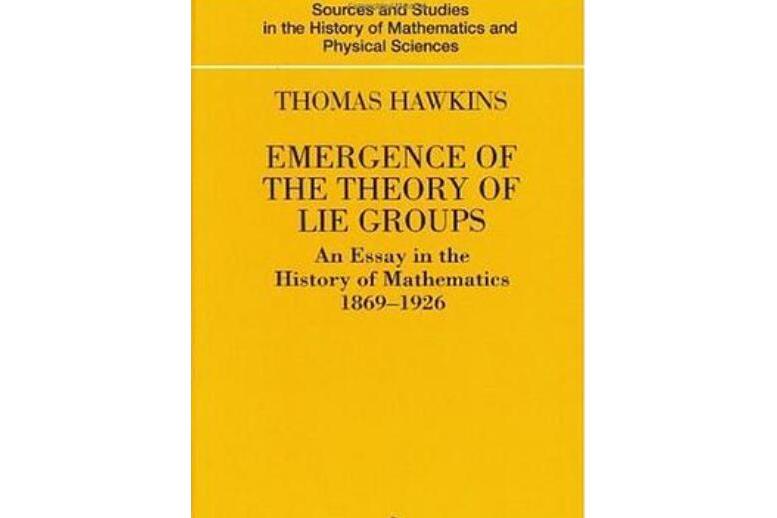《Emergence of the Theory of Lie Groupsl》是2000年Springer出版社出版的圖書。
基本介紹
- 中文名:Emergence of the Theory of Lie Groups
- 裝幀:Hardcover
- 定價:USD 99.00
- 作者:Thomas Hawkins
- 出版社:Springer
- 出版日期:2000年07月19日
- ISBN:9780387989631

《Emergence of the Theory of Lie Groupsl》是2000年Springer出版社出版的圖書。
《Remaking the Union》是一本圖書,作者是Elcock, H. J.; Elcock, Howard; Elcock, H. J.內容簡介 The contributors to this volume address the issues arising from devolution and regional government in two ways. First of all, they explore the debates about devolution in Scotland, Wales and ...
The world trading system is wracked with uncertainty and risks of inefficiency tinked to new forms of exclusive trading blocks. This challenge follows from the emergence of trade disputes between major players in the trading systems, involving the US and China in pa...
《Quantifying the Present and Predicting the Past: Theory, Method, and Application of Archaeological Predictive Modeling》是一本圖書。內容簡介 One of the more interesting developments in the field of archaeology in the recent...
as with their labels and chronology. The important developments in both American and European sociology are considered in full, and special attention is given to the emergence of social anthropology and social psychology and to the profound infl uence of World War II on current work in the fiel...
and served as the basis for the currently popular "process approach" to neuropsychological diagnosis. Although he never completed the job of designing a general theory of brain- behavioral relations, he nonetheless contributed mightily to the ongoing effort to develop one, and to the emergence of ...
two most often repeated theories about the emergence of law, the evolutionary theory and the social contract theory. It also discusses a fundamental shift, resulting from Enlightenment ideas about reason and morality, in the theoretical understanding of the relationship between morality and law. The ...
《Democracy and Trade Policy in Developing Countries》是University of Chicago Press出版的圖書,作者是Bumba Mukherjee 內容簡介 Does the emergence of democracy in the developing world promote economic globalization? Which societal actors favour and which actors oppose economic globalization and thus trade ...
The decade since the mid-1980s has seen the emergence of an international movement against current dam-building practices. The movement is comprised of thousands of environmental,human rights,and social activist groups on all the world's continents except Antarctica. It coalesced from a multitude of...
,如TheCambridgeSchool,Speech-ActTheory,TheEmergenceof CulturalStudies,TheStructuralistControversy,TheSpreadof LiteraryTheoryinBritain,CulturalMaterialism,British Poststructuralismsince1968,DevelopmentsinLiteraryTheory since1995。每章後面附有閱讀書目。作者簡介 佛羅里達大學英語教授,著述豐富,最新著作有:Glossalalia,...
to the field, and an excellent thesis. Two contributions I would pick out in particular are: the convincing case for a mutually enriching relationship between activity theory and critical discourse analysis; a potentially very productive view of the relationship of language and the emergence of ...
admit they can never take for granted. Instead, they report that maintaining this acceptance "requires constant effort on their part." Kibria suggests further developments may resolve this situation-especially the emergence of a new kind of pan-Asian American identity that would complement the ...
Chimeras and Consciousness begins the inquiry into the evolution of the collective sensitivities of life. Scientist-scholars from a range of fields--including biochemistry, cell biology, history of science, family therapy, genetics, microbial ecology, and primatology--trace the emergence and evolution ...
1.2 Assessment and Measurements of Credit Risk.1.2.1 Bank Capital Adequacy Standards (Basel I).1.2.2 Credit Risk Analyzed by Rating Agencies.1.2.3 Credit Risk Measured in the Financial Markets: CreditSpread.1.3 Traditional Methods of Credit Risk Management and theEmergence of Credit ...
(5) Xiaobei Liang, Bingyong Tang, Fuzzy variation coefficients programming of fuzzy systems and its application, FUZZY SYSTEMS AND KNOWLEDGE DISCOVERY, PT 1, LECTURE NOTES IN ARTIFICIAL INTELLIGENCE 3613: 140-147 AUG 2005. (SCI Journal)(6) Xinghua Liu, Xiaobei Liang, NJ Wang, Emergence of ...
16. Genyue Fu& Kang Lee. Social Grooming in the Kindergarten: The Emergence of flattery behavior Developmental Science 10:2 (2007), pp 255–265 17. 2007年 兒童說謊行為的研究述評 浙江師範大學學報(社會科學版) , 2007年 04期 第32卷(總第151期):30-34 (傅根躍 王麗)18. 2007年 不同獎勵...
18.Synaptic mechanism for functional synergism between delta- and mu-opioid receptors - Journal of Neuroscience - 2010 - 19.Nerve growth factor-regulated emergence of functional delta-opioid receptors - Journal of Neuroscience - 2010 - 20.Central Amygdala GluA1 Facilitates Associative Learning of ...
86.Xue K, Van Nostrand JD,He Zand Zhou J. 2014. Functional Molecular Analysis of Microbial Nitrogen Cycle by Microarray-based GeoChip: Insights for Climate Change, Agriculture and Other Ecological Studies. In: D. Marco (ed) Metagenomics of the Microbial Nitrogen Cycle: Theory, Methods and ...
Chen Chen, Min Zhao. The Undermining of Rural Labor Out-migration by Household Strategies in China’s Migrant-sending Areas: The Case of Nanyang, Henan Province. Cities. 2016. Volume 60, Part B, February 2017. (SSCI)Chen Chen, Bo Qin. The Emergence of China’s Middle Class: Social ...
